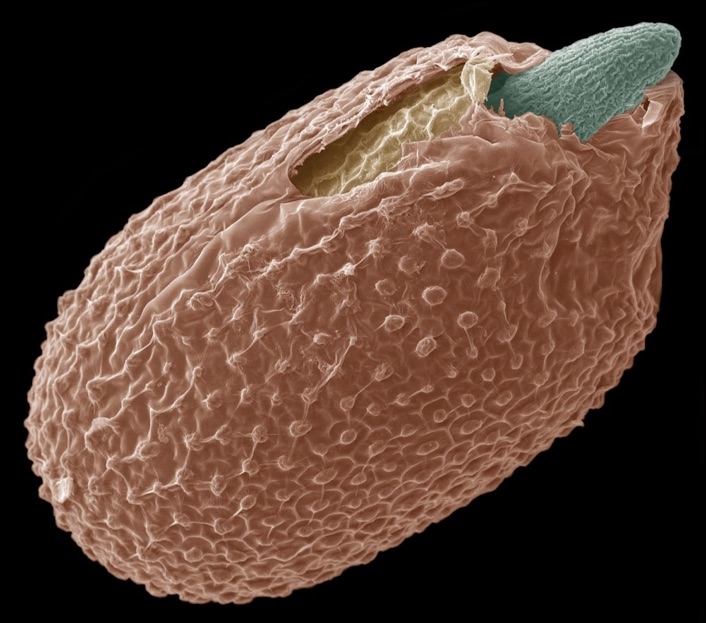





A seed consists of a small encapsulated plant embryo in a highly resistant and inert state awaiting favorable growth conditions to germinate and develop into a young seedling.
Seeds convert plants into time and space travelers providing them with protection over time while allowing their dissemination.
Germination control mechanisms have evolved allowing plants to perceive their abiotic and perhaps biotic environment in order to block their germination or else abandon irreversibly the highly protected embryonic state within the seed by forming a fragile seedling.
We are interested in understanding the molecular genetic mechanisms allowing seeds to control their germination and early post-embryonic (juvenile seedling) development.

An Arabidopsis germinating seed observed by scanning electron microscopy
S. Loubéry, L. Demonsais & A. Utz-Pugin, Plant Imaging Unit, Department of Botany and Plant Biology, University of Geneva
University of Geneva • Department of Plant Biology • 30 Quai Ernest-Ansermet • 1211 Geneva Switzerland
